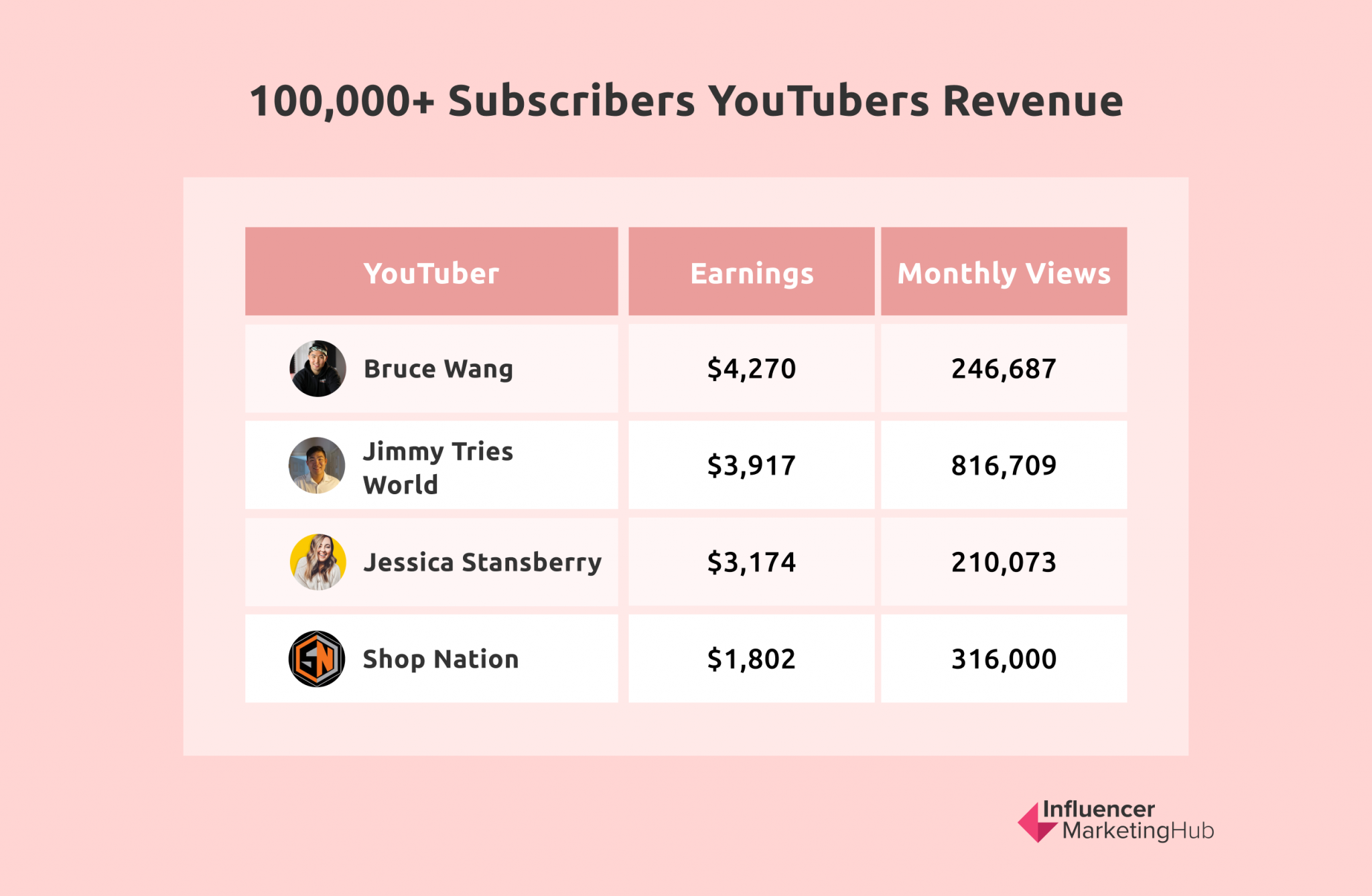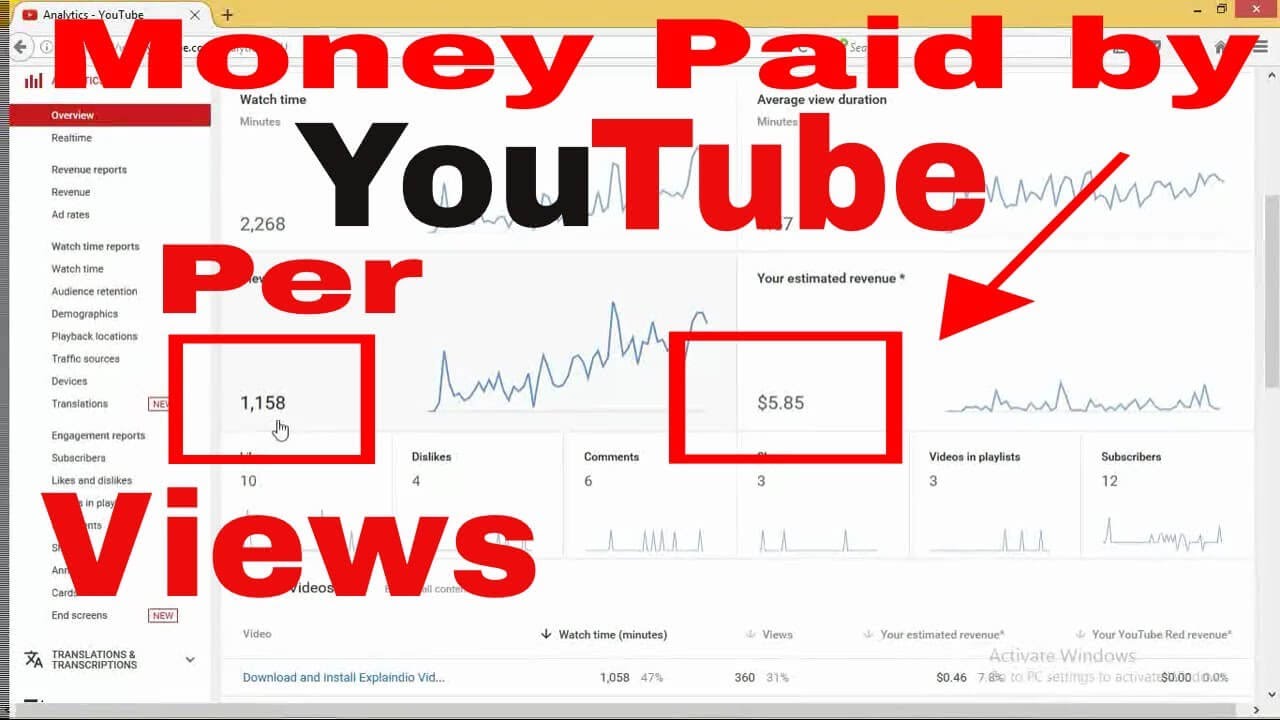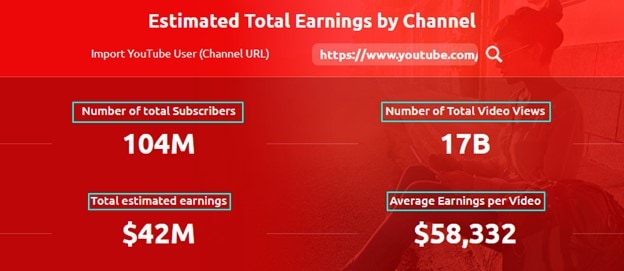YouTube monetization is the process of earning money through your videos on the platform. It allows creators to turn their passion for content creation into a source of income. To get started, you'll need to join the YouTube Partner Program (YPP), which has specific eligibility criteria, including having at least 1,000 subscribers and 4,000 watch hours over the past 12 months. Once you become a part of the program, you can earn money through various streams.
The main ways to monetize your content include:
- Ad Revenue: This is the most common method, where ads are displayed before, during, or after your videos.
- Channel Memberships: Viewers can pay a monthly fee for special perks like exclusive badges and emojis.
- Sponsorships: Brands pay you to promote their products or services in your videos.
- Merchandise Shelf: You can showcase your own branded products directly on your channel.
Understanding how much you can earn is crucial, especially when considering your content strategy. The earnings can vary widely based on factors like audience location, engagement, and the type of content you create.
Understanding CPM and RPM

CPM (Cost Per Mille) and RPM (Revenue Per Mille) are two vital metrics you need to grasp to analyze your earnings effectively on YouTube. They help you understand how much you're making per 1,000 views, which can significantly influence your content strategy and financial expectations.
CPM: This is the amount advertisers are willing to pay for every 1,000 ad impressions on your videos. It's important to note that CPM does not reflect your actual earnings, as not every viewer sees an ad. Several factors can affect CPM, such as:
- Audience demographics (age, location, interests)
- Seasonal trends (like holidays or events)
- Content niche (some niches attract higher-paying ads)
RPM: This measures how much you earn per 1,000 views after YouTube takes its cut. Unlike CPM, RPM includes all revenue streams, not just ad revenue. It gives a clearer picture of your earnings. RPM can vary based on:
- The number of ads shown
- Viewer engagement (likes, shares, and comments)
- Geographic location of your audience
To summarize, while CPM indicates how much advertisers pay, RPM gives you an insight into your actual earnings. Understanding both metrics can help you strategize content effectively and maximize your income potential on the platform.
Curl error: OpenSSL SSL_connect: SSL_ERROR_SYSCALL in connection to chatgpt4online.org:443
Also Read This: How to Turn Off Subtitles on YouTube TV: Managing Display Settings
Factors Affecting Earnings Per 10000 Views

When it comes to determining how much a YouTuber can earn per 10,000 views, several key factors come into play. Understanding these factors can help content creators optimize their earnings and make informed decisions about their channels.
- Ad Types: Different types of ads (skippable, non-skippable, display ads) have varying CPM (Cost Per Mille, or cost per thousand views). For instance, non-skippable ads usually pay more than skippable ones.
- Viewer Demographics: The location and age of your audience significantly impact earnings. Advertisers pay more for audiences in countries like the USA or Canada. For example, a tech channel targeting young professionals in the U.S. might attract higher-paying ads than a similar channel targeting a global audience.
- Content Niche: Certain niches like finance, tech, and health can command higher CPMs. A finance channel could earn $20+ per 10,000 views, while a lifestyle channel might earn less than $10.
- Engagement Rate: Channels with high engagement (likes, comments, shares) often see better ad performance, leading to increased earnings. Engaged viewers are more likely to interact with ads, which boosts revenue.
- Seasonality: Earnings can fluctuate based on the time of year. For instance, during the holiday season, CPM rates typically rise as brands increase their advertising budgets.
Also Read This: How Long Do YouTube Videos Take to Upload? Factors Affecting Upload Speed
Case Studies of Popular YouTubers

To put things into perspective, let’s dive into a couple of case studies of popular YouTubers and their earnings per 10,000 views. These examples illustrate the variance in income based on different factors discussed earlier.
| YouTuber | Channel Niche | Average CPM | Earnings per 10,000 views |
|---|---|---|---|
| MrBeast | Entertainment | $10 - $20 | $15 |
| Michelle Phan | Beauty | $5 - $10 | $7.5 |
| Markiplier | Gaming | $8 - $15 | $11.5 |
| Graham Stephan | Finance | $20 - $30 | $25 |
As seen in the table, Graham Stephan, who focuses on finance, earns significantly more per 10,000 views compared to MrBeast and others in different niches. This highlights how niche and audience can drastically affect earnings.
Also Read This: Is Newsmax Available on YouTube TV? What You Need to Know
Strategies to Increase Revenue on YouTube
Growing your income on YouTube requires a mix of creativity, strategy, and engagement. Here are some effective strategies to maximize your revenue:
- Explore Multiple Monetization Options: Don’t restrict yourself to just ad revenue. Consider affiliate marketing, merchandise sales, and sponsorships. For example, if you create tech reviews, partnering with tech companies for affiliate links can significantly boost your income.
- Create Engaging Content: Focus on high-quality content that resonates with your audience. Use storytelling, humor, or educational elements to keep viewers coming back. Consistent uploads (like weekly series) can foster loyalty and increase view counts.
- Optimize Video SEO: Use relevant keywords in your titles, descriptions, and tags. This increases the chances of appearing in search results. Tools like TubeBuddy can help identify trending keywords.
- Utilize YouTube Shorts: With the rise of short-form content, creating engaging shorts can help attract new viewers and subscribers, potentially leading to higher revenue.
- Engage with Your Audience: Respond to comments and create polls to involve your audience in the decision-making process. This builds a community and boosts viewer retention.
Overall, diversifying your income streams and engaging with your audience are key to increasing your YouTube revenue. Remember, consistency is crucial!
Conclusion on Income Potential from YouTube Views
When considering the income potential from YouTube views, it’s essential to recognize that it varies significantly based on several factors. Here’s a breakdown of what you should keep in mind:
| Factor | Impact on Income |
|---|---|
| Content Niche | Some niches (like finance or tech) generally have higher CPM rates than entertainment or lifestyle niches. |
| Audience Demographics | Viewers from wealthier countries (like the US or UK) often yield higher ad revenues. |
| Engagement Rate | Higher engagement often leads to better monetization opportunities, like sponsorships and partnerships. |
In summary, while the income from YouTube views can start small (often just a few dollars per thousand views), with the right strategies, it can grow significantly. Many creators who leverage various monetization methods see their earnings increase substantially over time. It’s not just about views; it’s about creating a solid strategy and understanding your audience to truly unlock your income potential on YouTube!
 admin
admin








